TDWI Best Practices Reports
TDWI’s Best Practices Reports are designed to educate technical and business professionals about new business intelligence technologies, concepts, or approaches that address a significant problem or issue. Research for the Best Practices Reports is conducted via interviews with industry experts and leading-edge user companies, and is supplemented by a survey of business intelligence professionals.
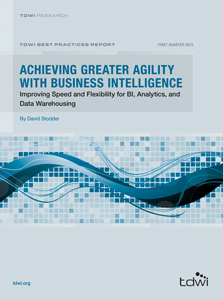
January 4, 2013
The information that flows from BI, analytics, and data warehousing systems can help organizations find a decision-making balance that avoids the extremes of snap decisions and rigid processes. This new survey-based research report examines benefits, barriers, technology solutions, and recommendations for achieving greater agility with business intelligence.
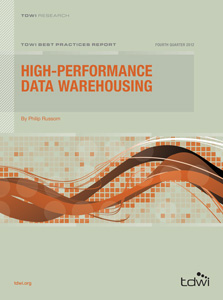
October 1, 2012
In the age of "big data," high-performance data warehousing is primarily about achieving speed and scale while also coping with increasing complexity and concurrency. The tips and strategies presented in this research can help user organizations prioritize their acquisition of vendor tools and their adoption of design best practices.
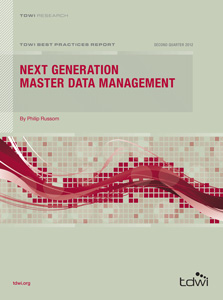
April 2, 2012
Master data management (MDM) is one of the most widely adopted data management disciplines of recent years. This report accelerates users’ understanding of the many new user best practices, solutions, and tools that have emerged as next generation MDM. It also helps readers map their options to real-world use cases and develop a strategy for MDM.
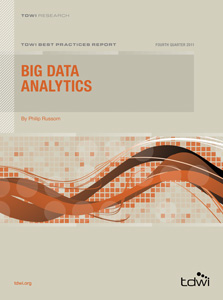
September 14, 2011
Big data analytics is the intersection of two technical entities that have come together. First, there’s big data for massive amounts of detailed information. Second, there’s advanced analytics, which can include predictive analytics, data mining, statistics, artificial intelligence, natural language processing, and so on. Put them together and you get big data analytics, the hottest new practice in BI.
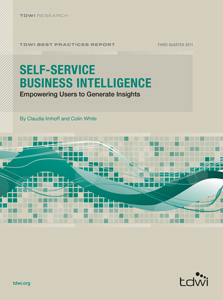
July 1, 2011
In today's economic environment, organizations must use business intelligence (BI) to make smarter, faster decisions. Yet, in too many organizations, decisions are still not based on business intelligence because of the inability to keep up with demand for information and analytics. To satisfy this demand, one approach involves setting up a self-service BI (SS BI) environment.
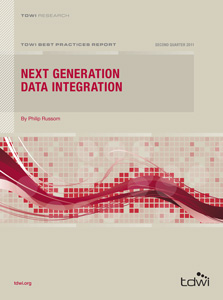
April 1, 2011
Data integration (DI) has undergone an impressive evolution in recent years. Today, DI is a rich set of powerful techniques, including ETL (extract, transform, and load), data federation, replication, synchronization, changed data capture, data quality, master data management, natural language processing, business-to-business data exchange, and more. This report brings readers up to date on all that's happening in this exciting arena of data management.
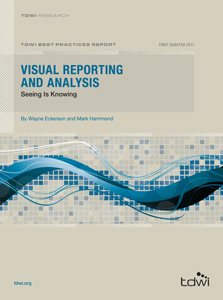
January 3, 2011
Data visualization is increasingly an essential element of
business intelligence (BI). No longer restricted to specialized
applications, data visualization in the form of charts, maps,
and other graphical representations is enabling business
users to better understand data and use it to achieve tactical
and strategic objectives.
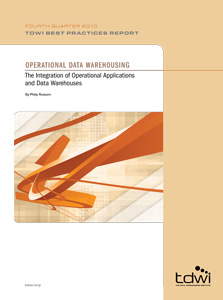
October 1, 2010
This report gives readers a jump-start on their journey toward operational data
warehousing by describing its enabling technologies and real-world business use cases, providing useful planning information for both business and technical managers.

July 1, 2010
The current economic downturn has accentuated the need among business intelligence (BI) teams to do “more with less.” With budgets cut or flat, most BI teams have been forced to innovate and find new ways to deliver projects more efficiently.